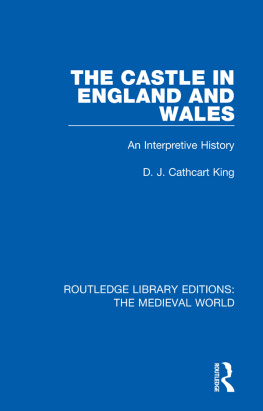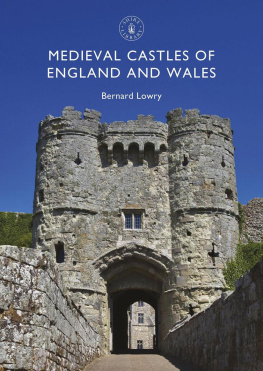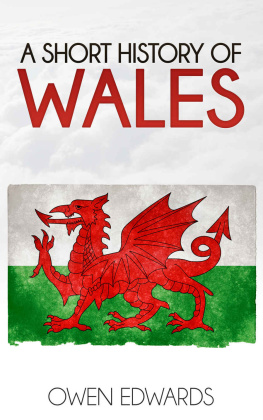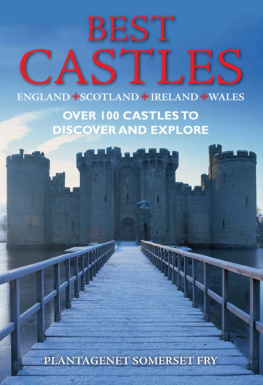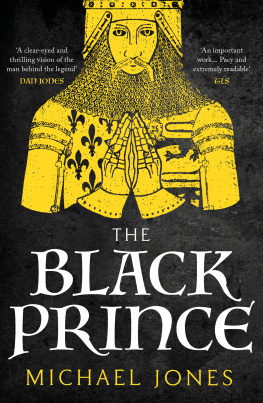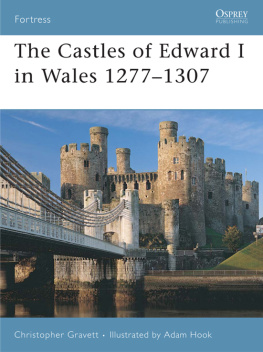Pagebreaks of the print version

CASTLES
OF
WALES
For My Family,
With whom Ive visited many castles in Wales.
CASTLES
OF
WALES
JOHN PAUL DAVIS
First published in Great Britain in 2022 by
PEN AND SWORD HISTORY
An imprint of
Pen & Sword Books Ltd
Yorkshire Philadelphia
Copyright John Paul Davis, 2022
ISBN 978 1 39901 887 6
eISBN 978 1 52674 996 3
The right of John Paul Davis to be identified as Author of this work has been asserted by him in accordance with the Copyright, Designs and Patents Act 1988.
A CIP catalogue record for this book is available from the British Library.
All rights reserved. No part of this book may be reproduced or transmitted in any form or by any means, electronic or mechanical including photocopying, recording or by any information storage and retrieval system, without permission from the Publisher in writing.
SJmagic DESIGN SERVICES, India.
Pen & Sword Books Limited incorporates the imprints of Atlas, Archaeology, Aviation, Discovery, Family History, Fiction, History, Maritime, Military, Military Classics, Politics, Select, Transport, True Crime, Air World, Frontline Publishing, Leo Cooper, Remember When, Seaforth Publishing, The Praetorian Press, Wharncliffe Local History, Wharncliffe Transport, Wharncliffe True Crime and White Owl.
For a complete list of Pen & Sword titles please contact
PEN & SWORD BOOKS LIMITED
47 Church Street, Barnsley, South Yorkshire, S70 2AS, England
E-mail: enquiries@pen-and-sword.co.uk
Website: www.pen-and-sword.co.uk
Or
PEN AND SWORD BOOKS
1950 Lawrence Rd, Havertown, PA 19083, USA
E-mail: Uspen-and-sword@casematepublishers.com
Website: www.penandswordbooks.com
Introduction
When I was five years old, my parents took my brother and me on a caravan holiday to Pembrokeshire. The year was 1990: the earliest of my life that I can remember in any great detail. Thirty years later, its impossible to look back on that period without a sense of nostalgia. The weather was perfect. The sandy beaches endless. The world was still a decade from reliance on the Internet and mobile phones. As a child growing up in a low-to middle-income household, it was a time when imagination was a childs best friend, and even when it rained, the two-week seaside holiday was the indisputable highlight of the year.
As I briefly recalled in the introduction to my previous book, Castles of England, that trip proved an important one for me. Such was the lack of educational progress shown by my brother and I he a future Oxford grad preparing for secondary school, and me still getting to grips with writing my own name my parents wisely decided to expose us to the sights of the great outdoors. An investment was also made in a Cadw pass, allowing us free access to many of Waless incredible ruins. I remain convinced that I learned more during this two-week stay than I did that entire first year of school. Ive often wondered whether the same was true of sixteen years of schooling.
While my early struggles can undoubtedly be put down to my poor attitude and a lack of interest as much as my early teachers limited talents, things worked out to my advantage. As I look back, few memories compare with the joy I felt exploring those beautiful castles. From the moss-covered walls of Carew to the amusingly named Kidwelly, there was no shortage of mighty medieval bastions on which I could feast my imagination. Whether it was a game of darts or pool inside the damp walls of the eighteenth-century castellated mansion of Amroth Castle, where our caravan park was sited, a glance at the untidy desk of Dylan Thomass writing shed in the shadow of the boathouse and castle at Laugharne, or a walk through the flower-covered gardens of Manorbier, my enthusiasm never wavered. Even now, there are few things I remember more fondly than the unique sensation of eating a bowl of chips in the great hall of Caerphilly, on whose walls the arms of many great families hung proudly. My, I felt a proper little knight.
On my return from that two-week paradise, my reception teacher invited me to present on my visit. On our final night, my father and brother had helped me put together a scrapbook of our time away, the content of which formed the heart of my show and tell. With the possible exception of hiding my teachers favourite whistle and cutting another boys hair to the point of near baldness, that talk was the highlight of infant school.
Little did I know, it would be the only public talk I ever gave in primary school.
More than thirty years later, I still have the scrapbook close at hand. Even as I write, I struggle to turn the pages without a genuine sense of awe and wonder. The tattered cover may have given way to a newer one, but the pictures have survived, as have the memories. Seated at my computer, I cant help but smile to think that the motley collection of pages would form the basis of a published book.
Ever since that trip to Amroth Castle, from which I began a lifelong acquaintance with the castles of Great Britain, Wales has held a special place in my heart. Growing up in England, yet never more than a stones throw from the border, trips were regular back then and remain so to this day. As someone who regards himself as much a Brit as an Englishman, the subject of patriotism and national identity is of great interest to me. When driving from England, only the signposts offer any persuasive evidence that one has passed into a different country. However, such things become increasingly obvious the farther one travels. A visit to one of the historic towns or villages is often enough to realise that Wales is a nation where the past forms a treasured part of the modern identity. From the historic pub to the wattle and daub cottage, reminders of centuries past can be found in every nook and cranny of the local architecture. Be it the walls of the local church, pub, library, village hall or town square, all contribute in their own way to preserving a culture that shows little sign of diminishing.
Even at the time of writing, parts of Wales remain little changed since the days of St David. The more I see of Britain, the more I come to learn how rare this is. The Welsh language is one of the oldest in Europe and is still widely in use. The country is also blessed with a treasure trove of early medieval literature. According to legend, Merlin was born in Wales. Except perhaps for Glastonbury and Cornwall, nowhere in Britain is more deeply intertwined with the tales of King Arthur. Many a song has been written of the verdant Welsh valleys; no less true is this of the misty mountains and soaring headlands. While the modern-day tourist must accept regular rain as the necessary cost for the natural vibrancy of the vegetation, water was sacred to the ancient dwellers of this land of deep rivers, rugged coastlines and beautiful lakes. Nearly every water source has a story dating back to mythology. It has also been told that the breaking of a wave represents a tormented cry of one of the thousands of Welshmen to have become victim to the sea. In the Dark Ages, tales were told of terrifying dragons lurking at the bottom of deep lakes, guarding a pot of gold and bewitching passing travellers to their deaths. Throughout its history, the dragon has held a central place in Welsh culture. Since the Middle Ages, the emblem of Wales has been Y Ddraig Goch, The Red Dragon. As long as there has been civilisation, fact and folklore have co-existed. Even now, Wales is a land where the present meets the past. The home of a unique people with a proud and passionate spirit. A land of mountains, mist, and rugby.






